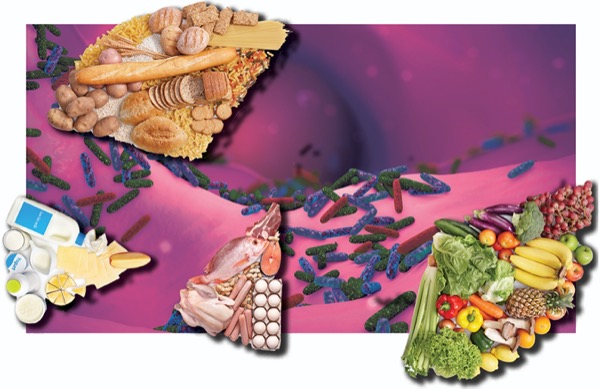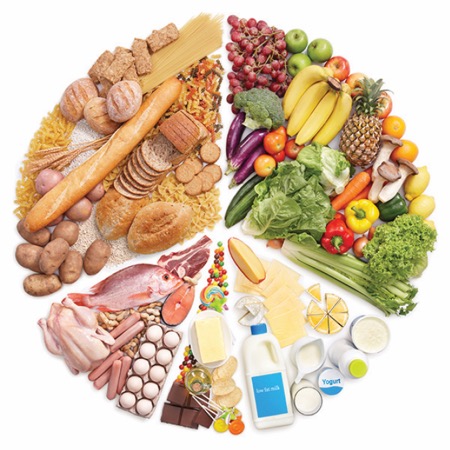Food can have a direct effect on inflammation and disease activity in Crohn’s disease and ulcerative colitis, making diet and nutrition a critical component of disease management for patients. Gastroenterologists can support patients in their dietary choices and help them avoid malnutrition and its downstream effects, including infection risks and other complications.
Experts delved into the complex relationship between nutrition and inflammatory bowel disease, discussing the latest strategies and promising data in the literature, during a session at the 2023 Crohn’s & Colitis Congress.
Managing Malnutrition In Crohn’s Disease
Up to 75% of IBD patients present with malnutrition or nutritional deficiency (Gastroenterol Res Pract 2018;2018:7890161), noted speaker Courtney Schuchmann, MS, RD, LDN, a registered dietitian specializing in gastrointestinal disorders at the University of Chicago Medical Center. “Malnutrition is associated with increased hospital length of stay and cost, mortality, infection risk, perioperative complications, reduced response to medical treatment, and increased risk for nonelective surgery,” Ms. Schuchmann said.
The main factors leading to malnutrition include altered oral intake to reduce GI symptoms, increased energy expenditure due to active inflammation, GI nutrient loss, malabsorption and medications, she noted.
“Screening for malnutrition and addressing nutritional deficiencies are vital to improving patient outcomes in IBD,” said Ms. Schuchmann, who noted that screening tools, such as the Subjective Goal Assessment (SGA) of Malnutrition, Patient-Generated SGA and Malnutrition Universal Screening Tool, can be used. Providers should also ask patients about unintentional weight loss or reduced food intake during clinic visits (Nutrition 1999;15[6]:458-464).
Restrictive Diets May Increase Risk
Although various dietary therapies are suggested to play a role in managing IBD—including the specific carbohydrate diet, IBD anti-inflammatory diet, low-FODMAP (fermentable, oligo-, di-, monosaccharides and polyols) diet and autoimmune protocol—there is insufficient evidence to support their use for inducing remission in patients with CD (apart from two diets explained further below). In fact, Ms. Schuchmann said restrictive diets may increase the risk for nutrient inadequacies, weight loss, disordered eating, worsened anxiety and depression, and impaired food-related quality of life.
Instead, oral nutritional optimization is recommended, with an emphasis on a high-calorie diet consisting of adequate protein and the use of oral nutritional supplements, she said. When oral optimization is insufficient, enteral nutrition can be considered if the patient has a functioning GI tract (Clin Nutr 2020;39[3]:632-653).
In certain circumstances, such as high-output fistulas or short-bowel syndrome, parenteral nutrition may be necessary. In such settings, nutrition support provided perioperatively in malnourished patients reduces infectious complications, delays in scheduling of IBD surgery, hospital length of stay and cost, Ms. Schuchmann said.
2 Diets for Remission in CD
Although data are sparse for other dietary interventions in IBD, two therapies for inducing remission in CD are exclusive enteral nutrition (EET), which is very restrictive, and the Crohn’s disease exclusion diet (CDED), a newer diet “designed to reduce exposure to dietary components hypothesized to negatively affect the microbiome, intestinal barrier and immunity” (Curr Med Res Opin 2021;37[7]:1115-1120).
EET, in which 100% of the patient’s nutritional needs are provided via enteral formula, is used as first-line treatment to induce remission in children and adolescents with active CD, with remission rates up to 80% (Scand J Gastroenterol 2017;52[9]:995-1001). In the adult patient population, remission rates drop to 45%, likely related to low adherence rates.
The CDED is a high-protein low-fat diet that limits or excludes foods that may adversely affect the microbiome, such as processed meat and dairy products, while encouraging intake of whole unprocessed foods and fibrous foods including chicken, eggs, fruits and vegetables (box). The multistage diet with induction and maintenance phases “is designed to exclude dietary components that generate a high-Proteobacteria/low-Firmicutes–led dysbiosis, components that may allow biofilms or mucosal bacteria, as well as components that impair barrier function or bacterial clearance mechanism,” according to Levine et al who have studied the diet extensively (Nutrients 2020;12[3]:880; Gut 2018;67[9]: 1726-1738). The diet “can be coupled with liquid formulas to provide additional sources of protein and calcium to ensure growth and restitution of lean body mass,” they noted (Nutrients 2020;12[3]:880; Gut 2018;67[9]: 1726-1738; Gastroenterology 2019;157[2]: 440-450).
“I like the Crohn’s exclusion diet and have started incorporating it into my practice,” Laura E. Raffals, MD, an IBD expert and a professor of medicine at Mayo Clinic, in Rochester, Minn., told Gastroenterology & Endoscopy News. “For the most part, my advice to patients is to eat lots of fruits and vegetables, healthy grains that are not processed, and healthy fats like avocados, olive oils and nuts, while avoiding processed foods.”
Noting that “there is a lot of controversy about red meat, dairy and gluten,” Dr. Raffals said she does not “typically recommend gluten-free diets unless a patient has celiac disease, is on the diet by choice, and feels better.”
Dietary Considerations For UC and the J-Pouch
In a separate presentation at the 2023 Congress, Keisa M. Lynch, DNP, APRN, FNP-C, a family nurse practitioner in the Department of Gastroenterology and Hepatology at the University of Utah, in Salt Lake City, emphasized the significant role that dietary factors play in managing UC and optimizing pouch function.
According to Dr. Lynch, patients with active UC should reduce intake of insoluble fiber, concentrated sweets, high fat, caffeine and sugar alcohol while increasing fluid intake (Clin Gastroenterol Hepatol 2020;18[6]:1381-1392). On the other hand, patients in remission with UC, should consume a high-fiber diet with as few restrictions as tolerated.
Dr. Lynch also highlighted the importance of managing diet to optimize pouch function. This includes consuming soluble fiber, proteins and omega-3 fatty acids from marine fish, while avoiding trans fats.
“Different foods can impact pouch function, and it is important to try all foods to determine which ones work best for individual patients,” said Dr. Lynch, who noted that patients also should monitor fluid and sodium intake to prevent dehydration and water and electrolyte imbalances. “There is a modest sodium absorptive capacity in patients with a J-pouch, which can lead to imbalances in water and electrolytes.”
Finally, Dr. Lynch recommended that patients collaborate with a dietitian to develop a regular healthy eating pattern to manage UC and optimize pouch function. “A good dietitian,” she said, “can help identify foods that may exacerbate symptoms and reduce intake accordingly.”
—Chase Doyle
Dr. Lynch and Ms. Schuchmann reported no relevant financial disclosures. Dr. Raffals reported financial relationships with Fresenius Kabi and Janssen.




